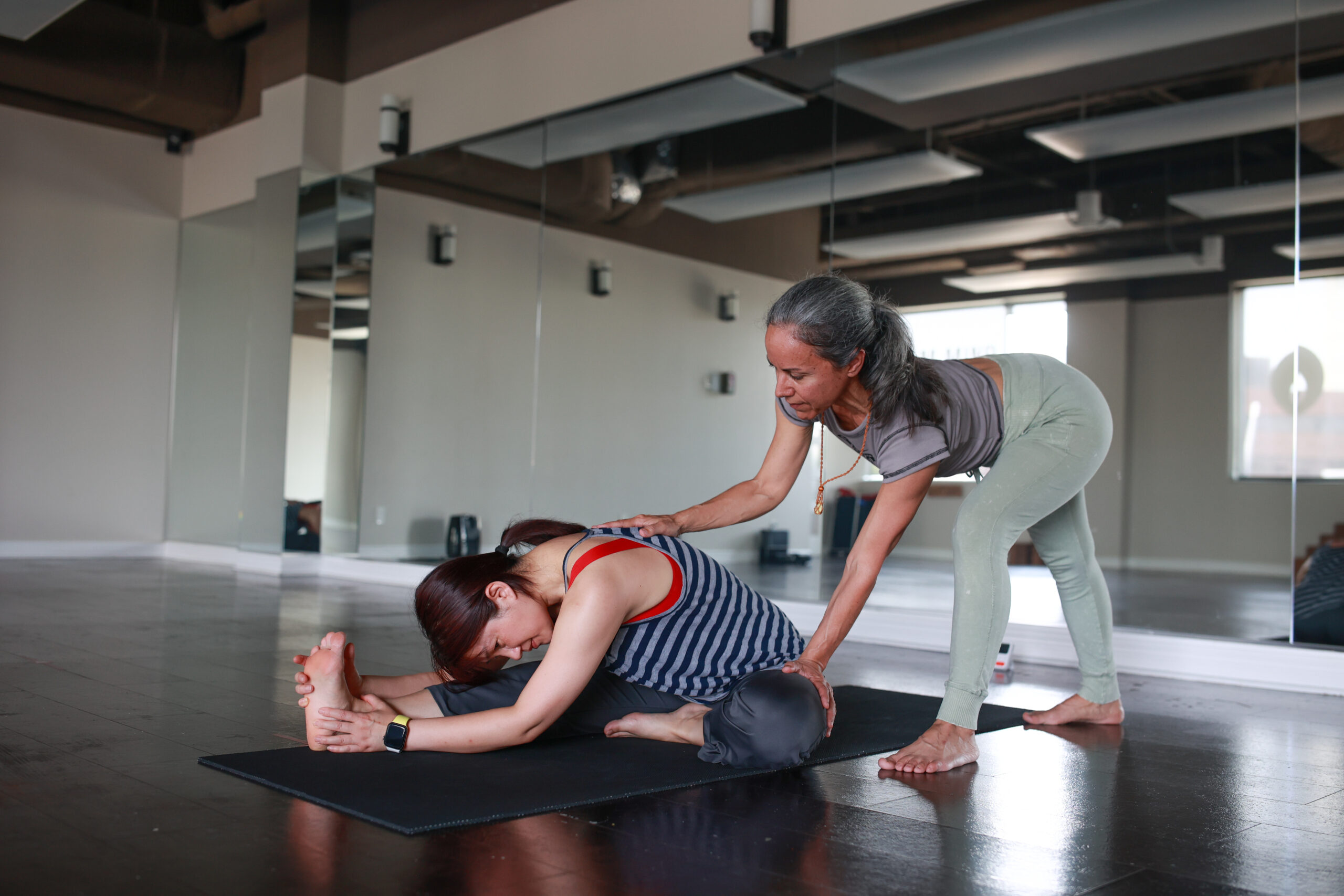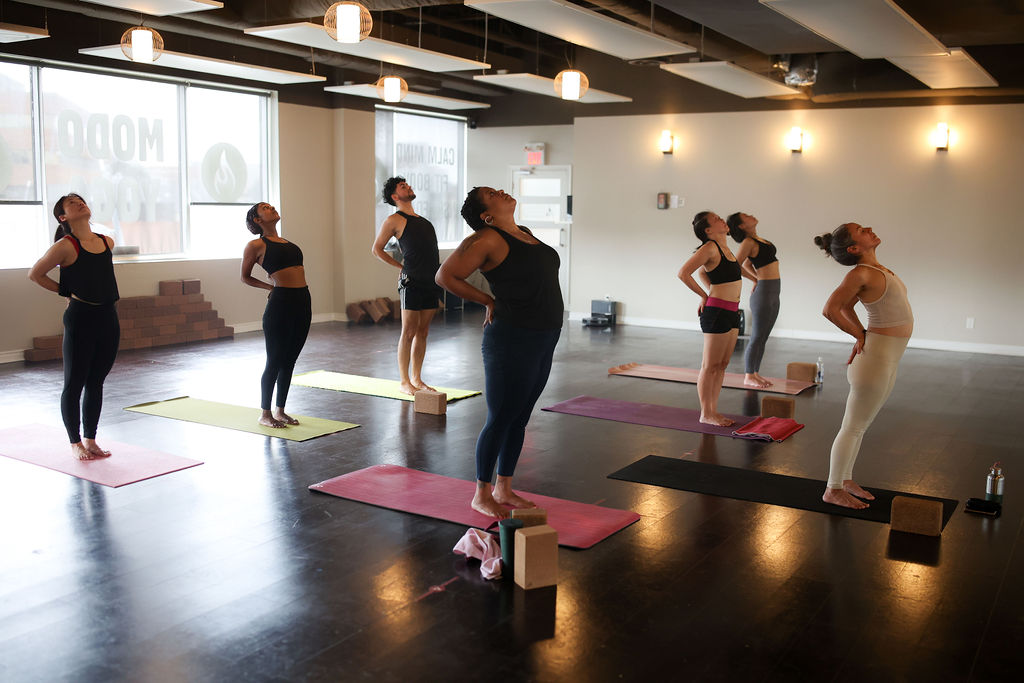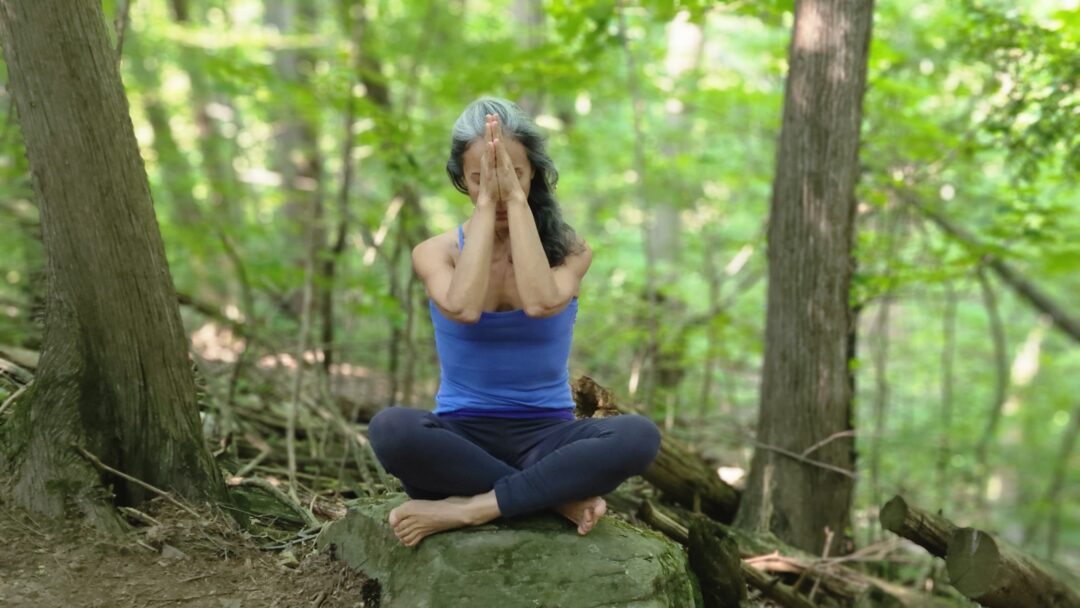Let’s talk about hands-on support in a yoga class.
First of all, can we reshape the language?
Our words are important in how we see and describe our reality. Language can either give us power or disempower us.
In the yoga industry, I often find the reference to “hands-on adjustment.” In yoga teacher training, you may find a module titled “Hands-on Adjustment.” Even well-renowned teachers use this terminology. Interestingly, if you went to Etsy to find yoga consent chips, you would mostly encounter chips with these labels: hands-on adjustment or assistance. It is now commercialized and stapled to yoga products.
I paused a long time ago in using it because the association with that term brings us to the idea of having hands that would alter (a part of our body) to fit a specific result or appearance. To suit what the teacher considers is the correct fit. In these contexts, we disempower the student and use patriarchism to implant “the correctness.” In my personal view, who am I to adjust you or your pose? I am not in front of the students to do that. Really. I invite, support, and hold our space together, humbling our mutual self-esteem.
I am conscientiously choosing other words that resonate better with my values, such as hands-on support.
Now that our language is out of the way let’s reflect on some of the benefits of hands-on support.
As a teacher, it is crucial to admit that there is an energy exchange between our hands and the part of the body of the student. I am sending energetic vibrations and receiving theirs at the same time. Therefore, the benefits are for both the student and the teacher. There is a connection, and there is empowerment in such a connection. Our body has a natural response to touch, and if, as a teacher, we use our hands when our energy is resonant and vibrant, we can create a safer and more spacious vibe for all.
The connection of our hands to support students can enhance the physical process of “remembering,” improving the memory of body cells.
Simultaneously, in class, we excessively rely on visual and auditory information. Sometimes we are so overstimulated that hearing cues in a class is no longer possible. Hands-on support would decrease this over-dependency, recalibrating organically and according to a tactile stimulus we receive. This process would activate the parasympathetic system entering a more relaxing state in our yoga practice.
Finally, let’s consider how to use hands-on support.
Consent, permission, and agreement are three words not to miss.
Hands-on has the right to exist only with them all.
The way we ask for such consent is also relevant. Teachers don’t want to put the student on the spot at any point in class. One way that is intimate and respectful is using chips that they can carefully place on the floor by their mat (yes/no). In this way, this communication becomes “private.” And it’s better to use a chip that they can flip at any time. Because right now, I may need hands-on support, but it may change 15 minutes later.
As a teacher, I am in class only when I am healthy. Still, we need practical sanitizing products when moving from one student to another.
I mentioned this subject above, but I will spell it here. If, as a teacher, I don’t feel centered (I may feel inhibited, in emotional pain, fearful, apprehensive, etc.), then the best route would be not to use hands-on support. Otherwise, what kind of soothing vibrations would I be sending? You want to offer your best energy and do it when you are ready.
t. lopez


